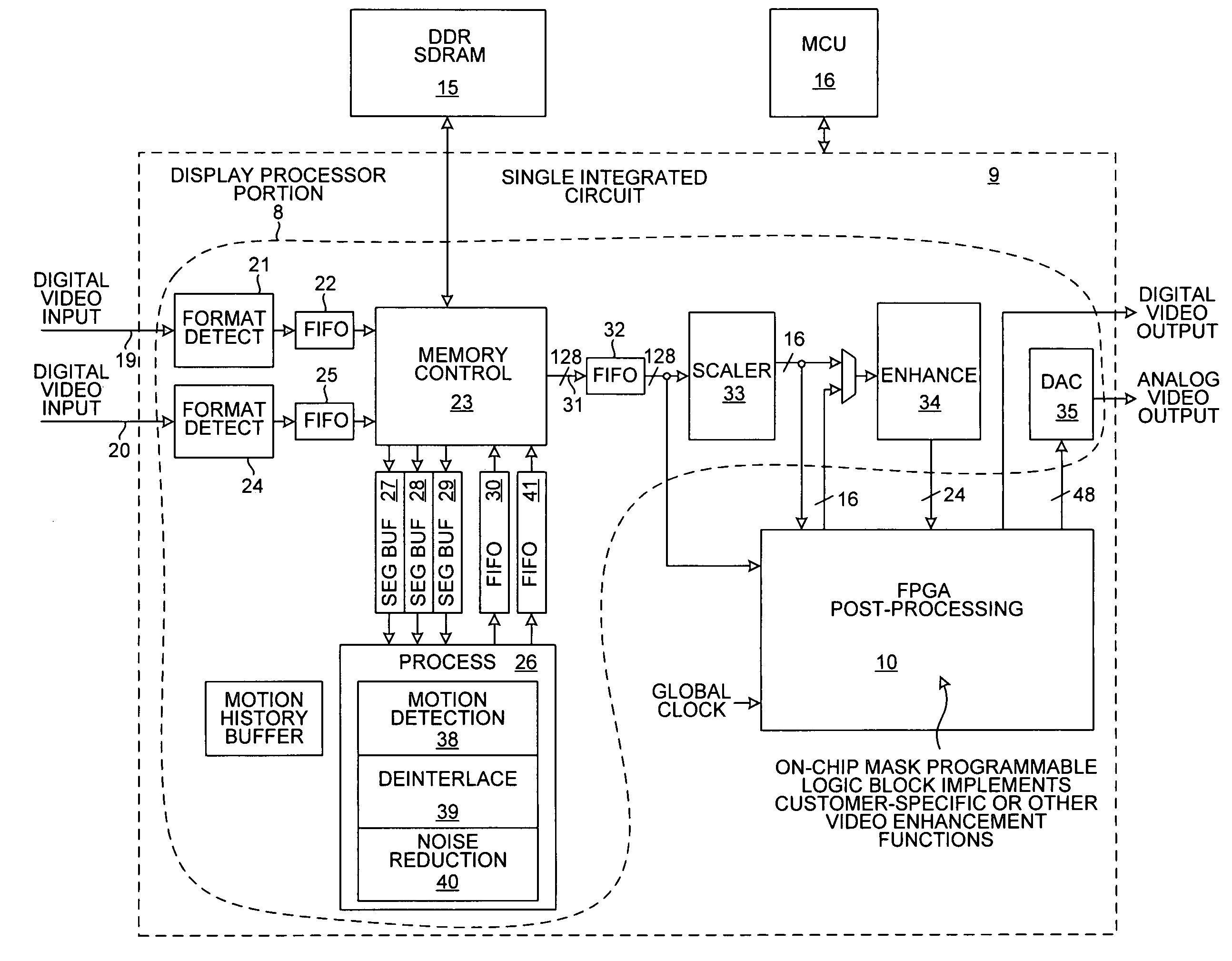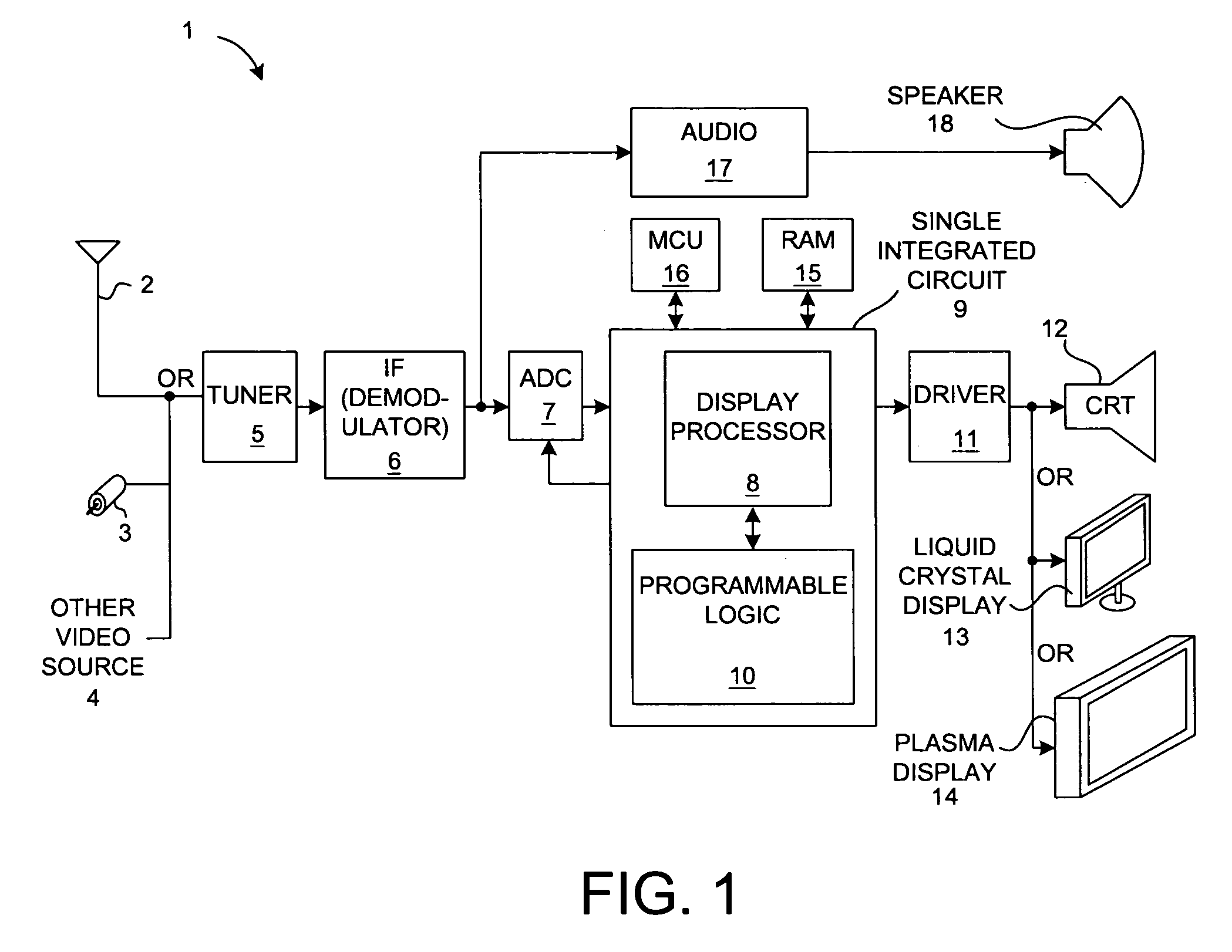Deinterlacer using block-based motion detection
a block-based motion detection and motion detection technology, applied in the field of deinterlacing video information, can solve the problems of pixel-based motion detection failing in burst noise situations, correlation is generally not exploited in pixel-based motion detection, burst noise, etc., and achieves low computational intensity, low cost, and high volume.
- Summary
- Abstract
- Description
- Claims
- Application Information
AI Technical Summary
Benefits of technology
Problems solved by technology
Method used
Image
Examples
Embodiment Construction
[0024]FIG. 1 is a simplified system level diagram of the electronics of a video display device 1 in accordance with one embodiment of the present invention. An incoming signal is received onto the video display device, for example, from an antenna 2, a coaxial cable 3, or another video source 4. The signal passes through a tuner 5, an IF demodulator 6, an analog-to-digital converter 7, and to a display processor 8 within an integrated circuit 9. The display processor 8 performs deinterlacing and scaling. A programmable logic portion 10 of integrated circuit 9, either independently or in concert with parts of the display processor 8, performs one or more enhancement functions. The resulting deinterlaced video signal is output from integrated circuit 9 to driver 11 and to a display device. The display device may, for example, be a cathode ray tube (CRT) 12, a liquid crystal display (LCD) screen 13, a plasma display 14 or other display device usable to view video. Frames of video infor...
PUM
 Login to View More
Login to View More Abstract
Description
Claims
Application Information
 Login to View More
Login to View More - R&D
- Intellectual Property
- Life Sciences
- Materials
- Tech Scout
- Unparalleled Data Quality
- Higher Quality Content
- 60% Fewer Hallucinations
Browse by: Latest US Patents, China's latest patents, Technical Efficacy Thesaurus, Application Domain, Technology Topic, Popular Technical Reports.
© 2025 PatSnap. All rights reserved.Legal|Privacy policy|Modern Slavery Act Transparency Statement|Sitemap|About US| Contact US: help@patsnap.com



